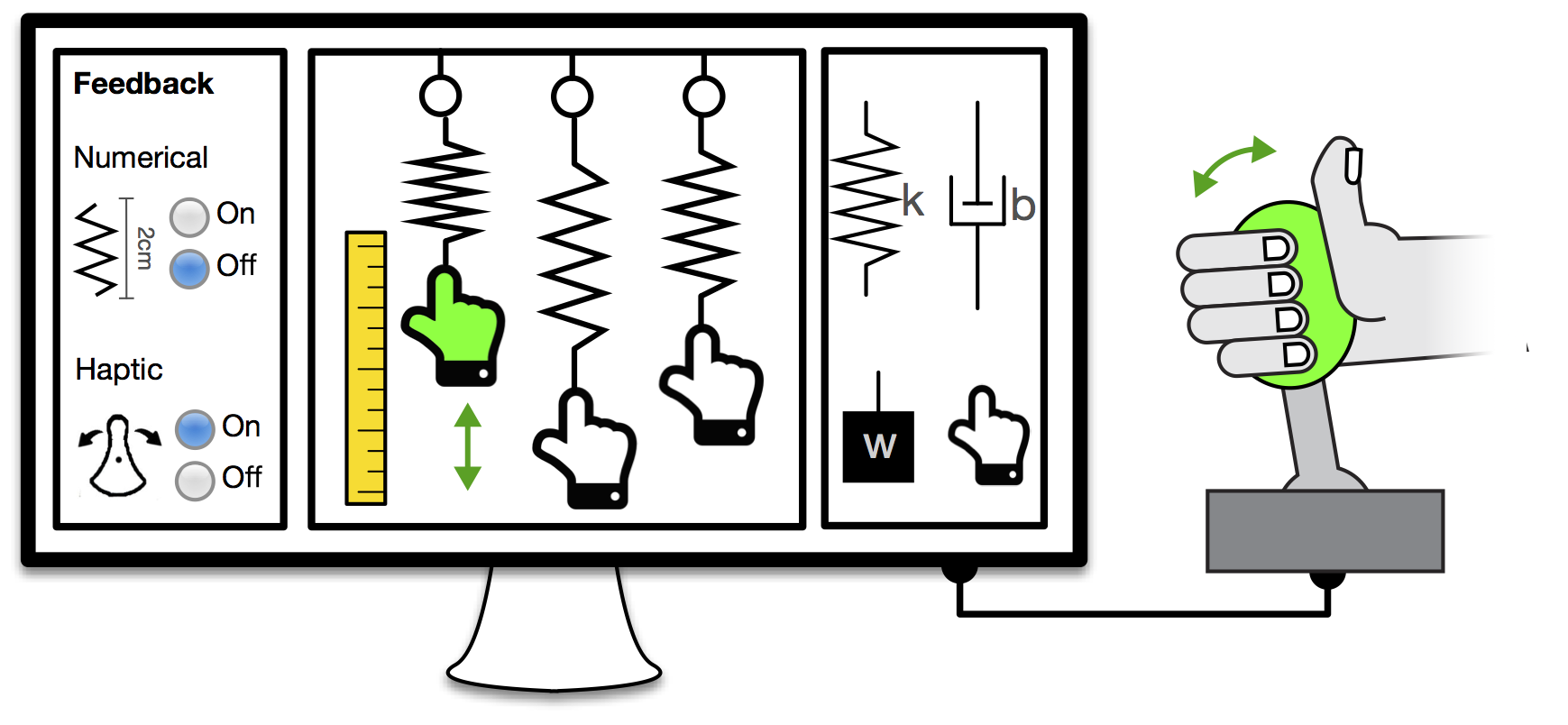HandsOn: Enabling Creative e-Learning

Physical action, like playing with springs, interacting with tangibles, or moving your body, can help students learn. Meanwhile, online learning has increased accessibility, connecting students to resources around the globe. How can we connect these two benefits?
Haptic technology could enable programmable, online, physical learning, but needs accessible hardware and software. With HandsOn, we have developed software and a corresponding conceptual model for affordable DIY haptic devices. This approach allows students to creatively interact with and modify virtual environments without code, allowing them to focus on STEM lesson content.

With two studies, we confirm that these affordable devices can render feedback appropriately for these lessons, and discover ways that creative, haptic interfaces affect learning tasks.
- HandsOn: Enabling Embodied, Creative STEM e-Learning with Programming-Free Force Feedback. 2016. Gordon Minaker, Oliver Schneider, Richard Davis, Karon MacLean. EuroHaptics 2016. London, UK. Best Poster Award.
- HandsOn with Hapkit 3.0: A Creative STEM E-Learning Framework. Melisa Orta Martinez, Gordon Minaker , Richard Lee Davis, Oliver Schneider, Tania Morimoto, Annalisa Taylor, Aaron Barron, Karon MacLean, Paulo Bilkstein, Allison Okamura. Demo at Haptics Symposium 2016.
Abstract
Embodied, physical interaction can improve learning by making abstractions concrete, while online courses and interactive lesson plans have increased education access and versatility. Haptic technology could integrate these benefits, but requires both low-cost hardware (recently enabled by low-cost DIY devices) and accessible software that enables students to creatively explore haptic environments without writing code. To investigate haptic e-learning without user programming, we developed HandsOn, a conceptual model for exploratory, embodied STEM education software; and implemented it with the SpringSim in- terface and a task battery for high school students. In two studies, we confirm that low-cost devices can render haptics adequately for this purpose, find qualitative impact of SpringSim on student strategies and curiosity, and identify directions for tool improvement and extension.